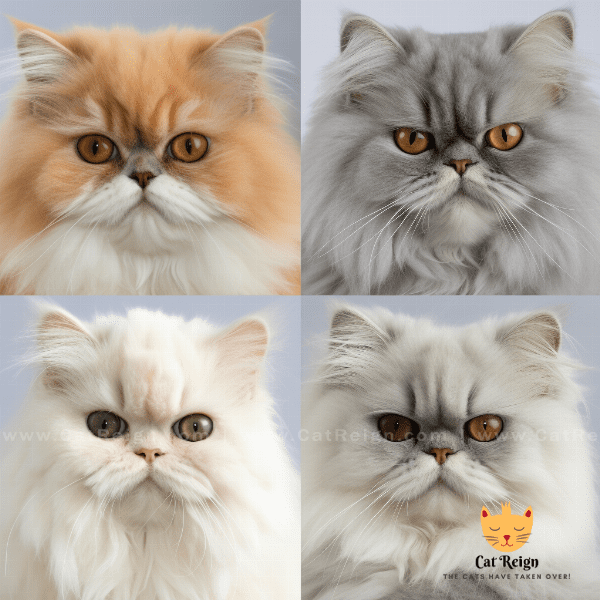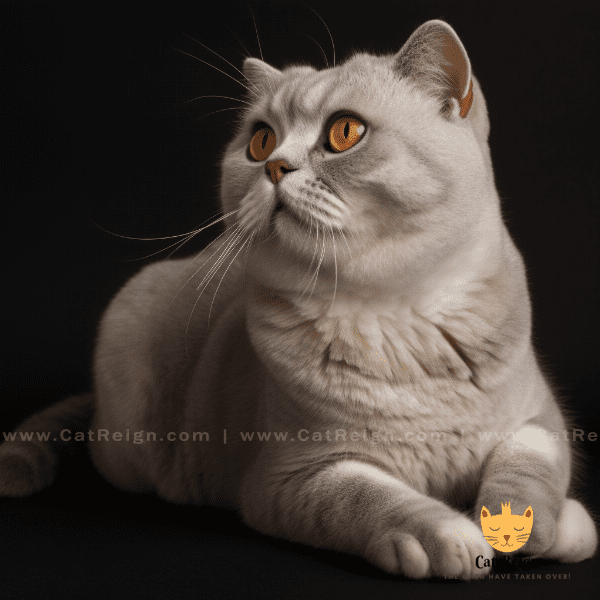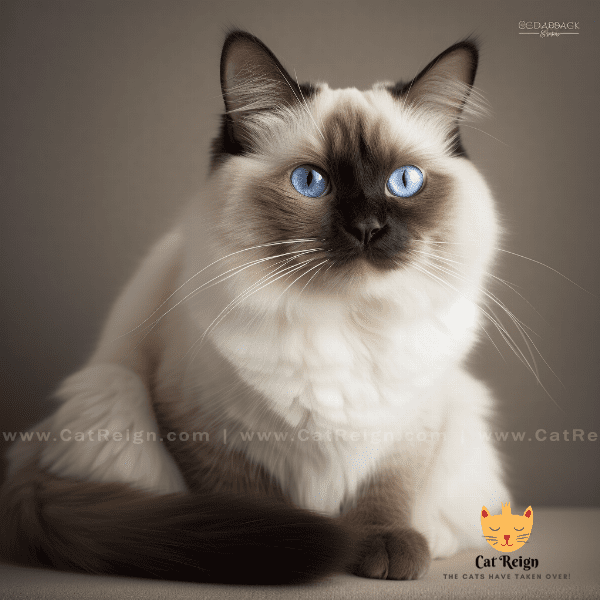Table of Contents
- “Origins and History of Persian Cats”
- “Physical Characteristics of Persian Cats”
- “Temperament and Personality Traits of Persian Cats”
- “Grooming and Maintenance for Persian Cats”
- “Health Concerns for Persian Cats”
- “Feeding and Nutrition for Persian Cats”
- “Training and Exercise for Persian Cats”
- “Living with Persian Cats: Tips and Advice”
- “Famous Persian Cats in Pop Culture”
- “Persian Cat Breeds and Variations”
Origins and History of Persian Cats
Persian cats are a beloved breed among feline enthusiasts. They have long, fluffy coats and expressive faces that make them instantly recognizable. However, their history is not as well-known as their appearance. In this section, we will explore the origins and history of Persian cats, shedding light on the fascinating story of how this breed came to be.
Ancient Ancestors
The Persian cat’s ancestry can be traced back to the ancient Middle East. It is believed that the breed originated in Persia (modern-day Iran) and was brought to Europe in the 17th century by Italian traders. However, their true origins are shrouded in mystery, as many ancient texts and paintings depict cats with similar features to the modern-day Persian breed.
Early Development
The Persian cat as we know it today began to develop in the late 1800s. British breeders began to selectively breed cats with long, luxurious coats and round faces. These early Persians were not as extreme in appearance as some of the modern-day show cats, but they were still highly prized for their beauty and unique personalities.
Popularity and Recognition
The Persian cat quickly became popular among cat lovers and breeders, and by the early 1900s, they had become a fixture at cat shows around the world. The Cat Fanciers’ Association (CFA) officially recognized the Persian cat as a breed in 1906, and since then, they have been one of the most popular breeds in the world.
About Persian Cats Today
Today, Persian cats continue to be a beloved breed among cat lovers. They are known for their gentle personalities, affectionate nature, and stunning appearance. Despite their popularity, however, they face some health challenges, including respiratory issues and eye problems. Nonetheless, Persian cat owners are dedicated to caring for their beloved pets, providing them with the love, attention, and veterinary care they need to live happy, healthy lives.
In conclusion, the origins and history of Persian cats are a fascinating subject, and one that sheds light on the ancient connection between humans and cats. From their mysterious beginnings in the Middle East to their status as a beloved breed today, the story of the Persian cat is one that continues to captivate people around the world.

Physical Characteristics of Persian Cats
The Persian cat is known for its distinctive appearance. They have a unique set of physical characteristics that set them apart from other breeds. In this section, we will take a closer look at the various physical traits of the Persian cat, shedding light on what makes them so special.
Coat
One of the most distinctive features of the Persian cat is its long, fluffy coat. This coat is made up of multiple layers of fine hair and requires regular grooming to keep it in good condition. Persian cats come in a variety of colors and patterns, including solid colors, bicolor, and tabby. Their coats are often a point of pride for their owners, and many take great care to keep their cat’s coat looking beautiful.
Face
The Persian cat is known for its distinctive, round face. Their faces are short and wide, with a flat nose and large, expressive eyes. This unique facial structure is one of the defining features of the breed and gives them a distinctive, almost human-like appearance.
Body
The Persian cat is a medium-sized breed, with a sturdy, muscular body. They have short, thick legs and a broad chest. Their tails are medium-length and are often fluffy, like the rest of their coat. Overall, the Persian cat has a compact, well-proportioned body that is both elegant and athletic.
Health Concerns
Despite their beauty and unique appearance, Persian cats are prone to certain health issues. Their flat faces can cause respiratory problems, and their long coats can lead to skin and eye infections if not properly cared for. Additionally, Persian cats are prone to polycystic kidney disease, a genetic condition that can cause kidney failure. As such, it is important for owners of Persian cats to be aware of these health concerns and take appropriate steps to keep their pets healthy and happy.
In conclusion, the physical characteristics of the Persian cat are what make them so beloved by cat lovers around the world. Their long, fluffy coats, distinctive facial features, and compact bodies set them apart from other breeds and give them a unique charm. However, it is important for owners to be aware of the potential health concerns associated with the breed and to take proper care of their pets to ensure they live long, healthy lives.
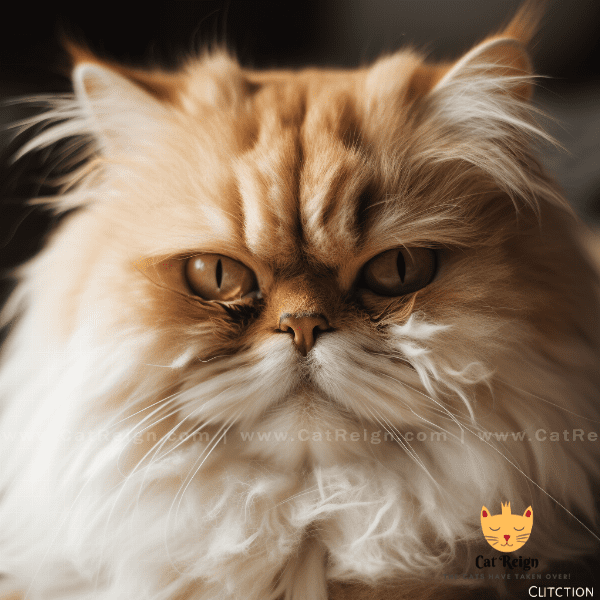
Temperament and Personality Traits of Persian Cats
The Persian cat is known for its gentle nature and affectionate personality. They make wonderful pets for those who are looking for a loving companion. In this section, we will explore the temperament and personality traits of the Persian cat, shedding light on what makes them such a special breed.
Affectionate
One of the defining personality traits of the Persian cat is their affectionate nature. They love to be held and cuddled and crave attention from their owners. Persian cats are known for their loyalty and devotion to their human companions, and they are often described as “lap cats” because of their love for snuggling up with their owners.
Calm
Persian cats have a reputation for being calm and peaceful. They are not as active as some other breeds and prefer to spend their time lounging in a comfortable spot or playing with their favorite toys. This laid-back personality makes them an ideal pet for those who want a low-maintenance companion.
Independent
While Persian cats are affectionate and loving, they are also quite independent. They are content to spend time alone and do not require constant attention from their owners. However, they do enjoy being around their human companions and will seek out affection when they want it.
Shy
Persian cats can be a bit shy around strangers or in unfamiliar environments. They may take some time to warm up to new people or situations, but once they do, they are incredibly loyal and affectionate. It is important to give Persian cats plenty of time to adjust to new surroundings and people to help them feel comfortable and secure.
In conclusion, the temperament and personality traits of the Persian cat make them a wonderful companion for those looking for a loving, low-maintenance pet. Their affectionate nature, calm demeanor, and independent spirit set them apart from other breeds and make them a joy to have in the home. However, owners should be aware of their shyness around strangers and take steps to help them feel comfortable in new situations.
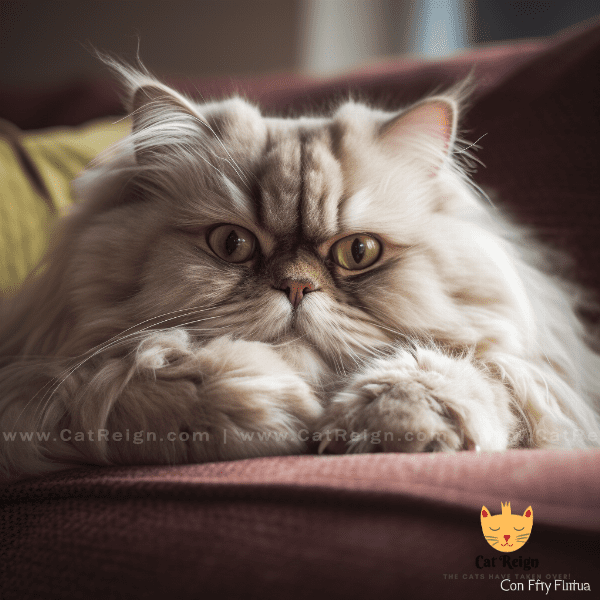
Grooming and Maintenance for Persian Cats
The Persian cat’s long, fluffy coat requires regular grooming and maintenance to keep it in good condition. In this section, we will explore the various grooming techniques and maintenance requirements for Persian cats, shedding light on what owners need to do to keep their pets looking and feeling their best.
Brushing
Regular brushing is essential for keeping the Persian cat’s coat free of tangles and matting. Owners should aim to brush their cat’s coat at least once a day, using a soft-bristled brush or comb. This helps to distribute natural oils throughout the coat, keeping it soft and shiny. It also helps to prevent hairballs, which can be a problem for cats with long hair.
Bathing
While Persian cats do not need to be bathed as frequently as some other breeds, they should still be bathed occasionally to keep their coat clean and healthy. Owners should use a gentle, cat-specific shampoo and avoid getting water in their cat’s ears or eyes. After bathing, the cat should be thoroughly dried with a towel or hairdryer to prevent matting.
Eye and Ear Care
Persian cats are prone to eye and ear infections, so owners should take extra care to keep these areas clean. Eye discharge should be wiped away with a damp cloth, and any signs of redness or swelling should be reported to a veterinarian. Ear canals should be cleaned with a cotton swab, but owners should avoid inserting anything deep into the ear canal, as this can cause injury.
Nail Care
Persian cats’ nails should be trimmed regularly to prevent them from becoming too long or sharp. Owners should use cat-specific nail clippers and be careful not to cut the quick, which can cause bleeding and pain. If owners are unsure about how to trim their cat’s nails, they can ask their veterinarian for guidance.
In conclusion, grooming and maintenance are essential for keeping Persian cats healthy and happy. Regular brushing, occasional bathing, and careful eye, ear, and nail care are all important aspects of keeping a Persian cat looking and feeling their best. While these grooming tasks may require some extra effort, they are well worth it to keep a beloved pet healthy and happy for years to come.
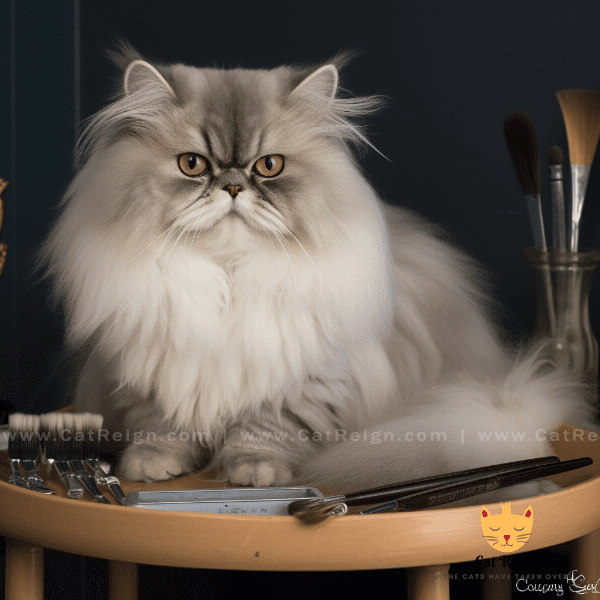
Health Concerns for Persian Cats
While Persian cats are generally healthy and resilient, they are prone to certain health concerns that owners should be aware of. In this section, we will explore the various health issues that can affect Persian cats, shedding light on what owners should watch for and how they can help their pets stay healthy.
Respiratory Issues
One of the most common health concerns for Persian cats is respiratory issues. Their flat faces and shortened airways can make it difficult for them to breathe, especially in hot or humid conditions. Owners should be aware of the signs of respiratory distress, such as coughing, wheezing, or difficulty breathing, and seek veterinary care if they notice any of these symptoms.
Eye Problems
Persian cats are prone to eye problems, such as conjunctivitis and corneal ulcers. Their large, round eyes are more exposed than those of other breeds, making them more susceptible to injury and infection. Owners should keep their cat’s eyes clean and watch for signs of redness, discharge, or squinting, which can indicate a problem.
Polycystic Kidney Disease
Polycystic kidney disease (PKD) is a genetic condition that affects many Persian cats. It causes the formation of cysts on the kidneys, which can eventually lead to kidney failure. Owners should be aware of the signs of kidney disease, such as increased thirst, decreased appetite, and weight loss, and should have their cat tested for PKD if they suspect a problem.
Dental Issues
Like many breeds, Persian cats are prone to dental issues, such as gum disease and tooth decay. Regular dental care, including brushing and professional cleanings, can help prevent these problems and keep the cat’s teeth and gums healthy.
In conclusion, while Persian cats are generally healthy and robust, they are prone to certain health concerns that owners should be aware of. Respiratory issues, eye problems, polycystic kidney disease, and dental issues are among the most common health concerns for Persian cats. By keeping a close eye on their cat’s health and seeking veterinary care when needed, owners can help their beloved pets live long, healthy lives.
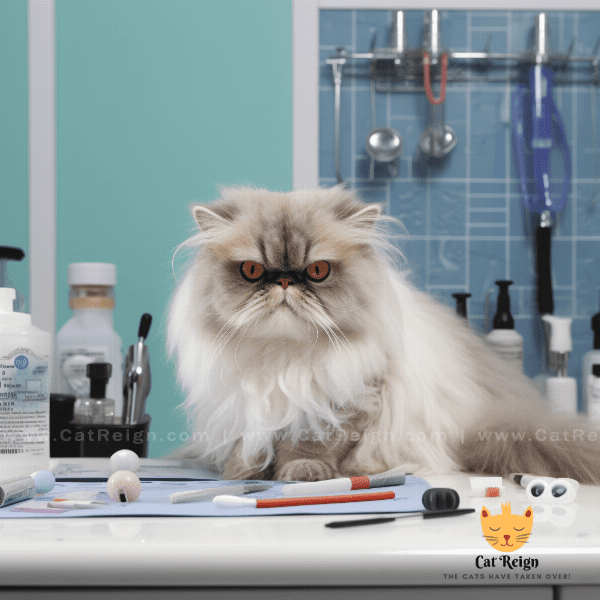
Feeding and Nutrition for Persian Cats
Proper nutrition is essential for keeping Persian cats healthy and happy. In this section, we will explore the feeding and nutrition requirements for Persian cats, shedding light on what owners need to do to ensure their pets are getting the right nutrients and vitamins to thrive.
Commercial Diets
Most owners feed their Persian cats a commercial diet, either dry kibble or wet food. It is important to choose a high-quality, nutritionally balanced food that meets the cat’s specific needs. Persian cats require a diet that is high in protein, with moderate levels of fat and carbohydrates. Owners should look for foods that are specifically formulated for Persian cats, as these will take into account the breed’s unique nutritional requirements.
Homemade Diets
Some owners prefer to feed their Persian cats a homemade diet, which can provide greater control over the ingredients and nutritional content. However, it is important to ensure that the diet is nutritionally balanced and meets the cat’s specific needs. Owners should consult with a veterinary nutritionist to create a homemade diet that is appropriate for their cat’s age, weight, and overall health.
Hydration
Persian cats are prone to urinary tract issues, so it is important to ensure that they are properly hydrated. Owners should provide their cats with plenty of fresh, clean water at all times and consider feeding wet food, which can help increase the cat’s fluid intake. Additionally, owners should monitor their cat’s urine output and watch for signs of dehydration, such as dry mouth or sunken eyes.
Portion Control
Portion control is important for maintaining a healthy weight in Persian cats, which can help prevent health issues such as obesity and diabetes. Owners should measure out their cat’s food carefully and avoid overfeeding, which can lead to weight gain. Additionally, owners should be aware of their cat’s activity level and adjust their feeding accordingly.
In conclusion, feeding and nutrition are essential components of keeping Persian cats healthy and happy. Owners should choose a high-quality, nutritionally balanced food that meets their cat’s specific needs and provides them with plenty of fresh, clean water. Whether feeding a commercial diet or a homemade diet, owners should be mindful of portion control and adjust their cat’s diet as needed to maintain a healthy weight. With proper nutrition and care, Persian cats can live long, healthy lives.
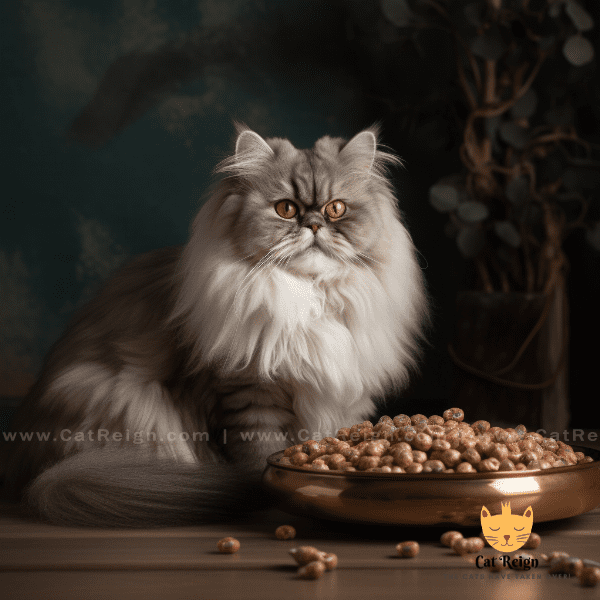
Training and Exercise for Persian Cats
While Persian cats are generally low-maintenance pets, they still require some training and exercise to stay healthy and happy. In this section, we will explore the training and exercise requirements for Persian cats, shedding light on what owners need to do to ensure their pets are getting the stimulation and activity they need.
Litter Box Training
Litter box training is an important part of owning a Persian cat. These cats are naturally clean animals and prefer to have a designated spot to do their business. Owners should provide their cat with a clean litter box in a quiet, private location and encourage them to use it consistently. If the cat has accidents outside the litter box, owners should investigate the cause and take steps to address the problem.
Socialization
Persian cats can be a bit shy around strangers and new situations, so it is important to socialize them early on. Owners should expose their cat to a variety of people, places, and situations to help them feel comfortable and confident in new environments. This can include introducing them to other pets, taking them on car rides, and having guests over to the house.
Exercise
While Persian cats are not as active as some other breeds, they still require some exercise to stay healthy and happy. Owners should provide their cat with toys and playtime to encourage them to be active. This can include toys that stimulate their natural hunting instincts, such as feather wands or laser pointers. Owners should also provide their cat with a scratching post to help them stay active and maintain their claws.
Training
While Persian cats are generally well-behaved, they still require some training to help them live harmoniously with their owners. This can include basic commands such as “sit” and “stay,” as well as training to discourage unwanted behaviors such as scratching or jumping on furniture. Positive reinforcement training is an effective way to train cats, as it rewards good behavior and helps build a positive relationship between the cat and owner.
In conclusion, while Persian cats are generally low-maintenance pets, they still require some training and exercise to stay healthy and happy. Litter box training, socialization, exercise, and training are all important aspects of caring for a Persian cat. With proper training and care, owners can enjoy a happy, healthy relationship with their beloved pet.
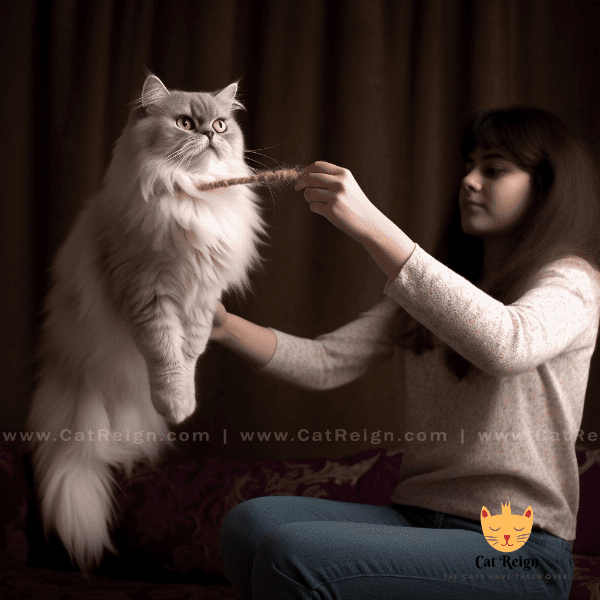
Living with Persian Cats: Tips and Advice
Living with a Persian cat can be a rewarding and fulfilling experience. In this section, we will provide tips and advice for living with Persian cats, shedding light on what owners need to know to provide the best possible care for their pets.
Create a Safe and Comfortable Environment
Persian cats thrive in a safe and comfortable environment. Owners should provide their cat with a designated space to sleep, play, and relax, away from loud noises and potential hazards. Additionally, owners should ensure that their home is safe for their cat, free of potential dangers such as toxic plants, electrical cords, and open windows.
Keep Up with Grooming and Maintenance
Grooming and maintenance are essential for keeping Persian cats healthy and happy. Owners should make sure to brush their cat’s coat regularly, bathe them occasionally, and keep their eyes, ears, and nails clean. Additionally, owners should provide their cat with regular veterinary care, including vaccinations, checkups, and dental cleanings.
Provide Stimulation and Exercise
Persian cats require some stimulation and exercise to stay healthy and happy. Owners should provide their cat with toys, scratching posts, and playtime to encourage them to be active. Additionally, owners should engage their cat in interactive play, such as chasing a toy or playing hide-and-seek, to help them stay mentally stimulated.
Be Mindful of Health Concerns
While Persian cats are generally healthy, they are prone to certain health concerns, such as respiratory issues, eye problems, and polycystic kidney disease. Owners should be mindful of these potential health issues and seek veterinary care if they notice any signs of illness or distress.
Enjoy the Bond with Your Pet
Above all, living with a Persian cat should be a joyful and rewarding experience. These cats are affectionate, loving, and loyal companions who will bring years of happiness to their owners. By providing proper care, attention, and affection, owners can enjoy a deep and meaningful bond with their beloved pet.
In conclusion, living with a Persian cat can be a wonderful experience for owners who are willing to provide the proper care and attention. By creating a safe and comfortable environment, keeping up with grooming and maintenance, providing stimulation and exercise, being mindful of health concerns, and enjoying the bond with their pet, owners can provide the best possible life for their beloved Persian cat.

Famous Persian Cats in Pop Culture
Persian cats have been a beloved breed for centuries, and have made their way into pop culture in various forms. In this section, we will explore some of the most famous Persian cats in pop culture, shedding light on how these cats have become cultural icons.
Mr. Bigglesworth from Austin Powers
One of the most famous Persian cats in pop culture is Mr. Bigglesworth from the Austin Powers movies. This hairless cat, played by several different cats throughout the films, became an iconic symbol of Dr. Evil’s villainy and eccentricity.
Choupette Lagerfeld
Choupette Lagerfeld is a real-life Persian cat who rose to fame as the beloved pet of fashion designer Karl Lagerfeld. Choupette has been featured in numerous fashion shoots and even has her own social media accounts, amassing a large following of fans around the world.
Snowbell from Stuart Little
Snowbell is a Persian cat who appears in the Stuart Little movies. This snobbish, scheming cat is a memorable character who adds humor and mischief to the films.
Puss in Boots from Shrek
While not specifically identified as a Persian cat, Puss in Boots from the Shrek movies has the long, fluffy fur and round face that are characteristic of the breed. This swashbuckling, sword-wielding cat has become a fan favorite, appearing in his own spinoff movie and television series.
Mr. Jinx from Meet the Parents
Mr. Jinx is a Persian cat who appears in the movie Meet the Parents. This quirky, high-maintenance cat becomes a source of frustration and amusement for the characters, adding comedic relief to the film.
In conclusion, Persian cats have made their way into pop culture in various forms, becoming cultural icons and beloved characters in movies, television shows, and fashion. From the hairless Mr. Bigglesworth to the beloved Choupette Lagerfeld, these cats have captured the hearts of fans around the world, proving that the Persian cat is truly a breed worth celebrating.
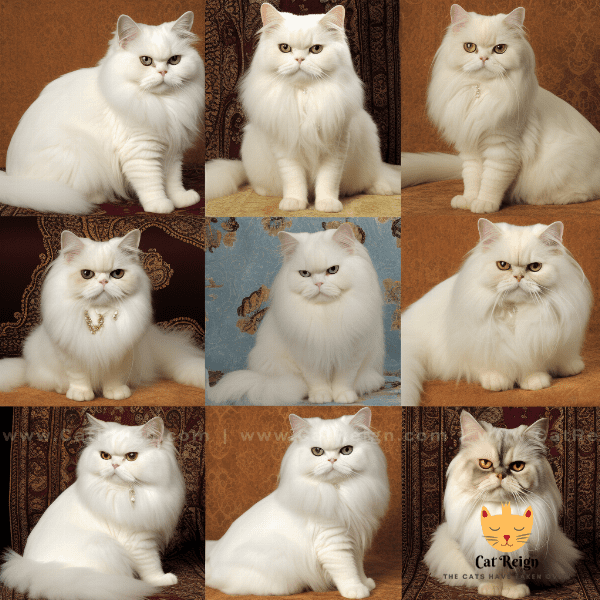
Persian Cat Breeds and Variations
Persian cats are a beloved breed known for their long, fluffy fur and round faces. While there is only one recognized breed of Persian cat, there are several variations and sub-breeds that have developed over the years. In this section, we will explore the different Persian Cat breeds and variations, shedding light on what makes each one unique.
Traditional Persian
The Traditional Persian is the most common and recognizable breed of Persian cat. These cats have a round face, short snout, and long, fluffy fur. They come in a variety of colors and patterns, including solid colors, tabby stripes, and bicolor.
Himalayan
The Himalayan is a crossbreed between a Persian cat and a Siamese cat. These cats have the same body type as a Persian cat but have the pointed coloring of a Siamese cat. Himalayans have a distinctive pattern of dark points on their ears, tail, and paws, with a lighter body color.
Exotic Shorthair
The Exotic Shorthair is a crossbreed between a Persian cat and an American Shorthair cat. These cats have a similar round face and body type as a Persian cat but have short, plush fur. Exotic Shorthairs come in a variety of colors and patterns, including solid colors, tabby stripes, and bicolor.
Doll Face Persian
The Doll Face Persian is a variation of the Traditional Persian breed. These cats have a slightly longer nose and less flat face than the Traditional Persian, giving them a more natural and expressive look. Doll Face Persians have long, fluffy fur and come in a variety of colors and patterns.
Teacup Persian
The Teacup Persian is a smaller variation of the Traditional Persian breed. These cats are bred to be smaller in size, typically weighing between 3-7 pounds. Teacup Persians have the same body type and fur as a Traditional Persian, but with a smaller stature.
In conclusion, while there is only one recognized breed of Persian cat, there are several variations and sub-breeds that have developed over the years. From the Traditional Persian to the Himalayan, Exotic Shorthair, Doll Face Persian, and Teacup Persian, each breed and variation has its own unique characteristics and traits that make them beloved by cat lovers around the world.
